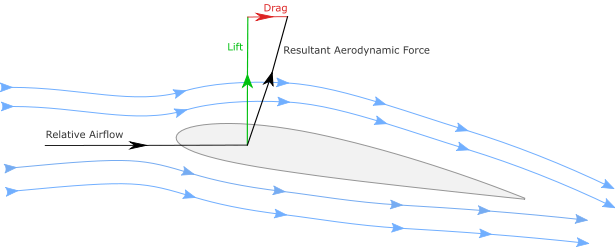Lift
Contents
Explanation
Lift is a mechanical force induced on an airfoil of an aircraft when the body moves through the air. The incoming stream of air, when it encounters the wings, it gets turned downwards due to the combined effect of Bernoulli's principle and the third law of motion and the resultant force gets resolved into two components. The vertical component that lifts the airplane, countering the weight is called as the lift and the horizontal component that opposes the forward motion of the aircraft is called as drag.
Frequently Asked Questions
How lift is generated?
In aerodynamics, lift is generated when a streamlined object like an airfoil or a thin plate moves through the air at a certain angle. This can be understood with newton’s third law of motion and Bernoulli’s principle. When the airflow encounters the leading edge of the wing, the flow is turned downward due to the shape of the airfoil. This interaction itself produces an equal amount of aerodynamic force on the wing, which gets resolved as lift and drag as discussed in the explanation section. Further down, the air that moves on the top side of the wing is faster than that of the air on the bottom side.
According to Bernoulli’s principle, this variation in velocities on either surface of the wings create a pressure difference that results in an aerodynamic force. Due to the shape of the airfoil, the lift component is higher than the drag component. But the primary contribution to the lift is due to the characteristic effect of the third law of motion.
How lift is generated when the airplane is upside down?
In most airplanes that are capable of flying inverted, the airfoil would be a symmetrical airfoil that is capable of producing lift in that position. So in an inverted airplane with a symmetrical airfoil, when the pilot pushes the control stick the angle of attack would decrease and produce a negative lift relative to the normal orientation of the plane, but in reality, it would be creating a positive lift as it is flying inverted.

